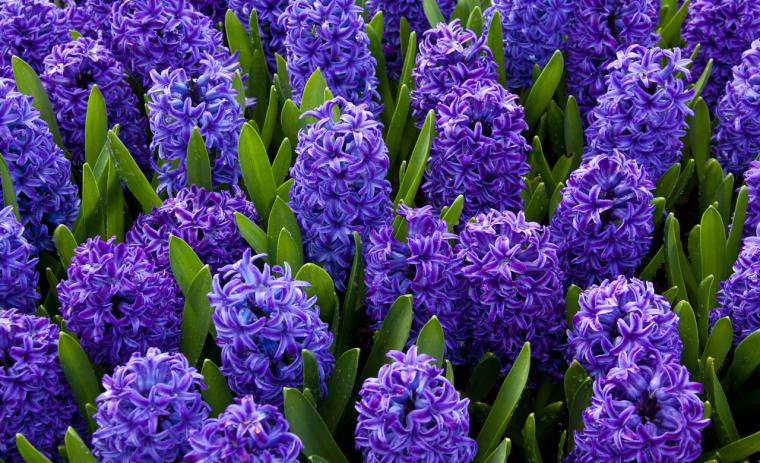COLUMBIA, Mo. – Few flowers pack the fragrance punch of hyacinth.
“Planting just a few can be very rewarding to the senses of both sight and smell,” says University of Missouri Extension horticulturist David Trinklein.
October is an ideal month to plant hyacinth, either outdoors or for indoor fragrance before the growing season. Mild fall temperatures allow a good root system to establish. Winter’s cold supplies the chill needed for these bulbs to flower next spring.
Hyacinth is thought to be native to Turkey and the Middle East. Homer and Virgil noted its sweet fragrance in their works. Hybridized and improved varieties of the herbaceous ornamental flower are available now in many colors. New varieties bear much larger and fuller flower spikes than in days of old.
If available, large “exhibition-size” bulbs are preferred for forcing, Trinklein said. With pre-chilled bulbs, hyacinths bloom indoors as early as Christmas. Untreated (not pre-chilled) bulbs may flower indoors by Valentine’s Day and throughout the late winter and early spring.
Pot both pre-chilled and untreated bulbs for indoor flowering no later than October. Add enough growing medium to let only the tip of the bulbs show above the soil line. After potting, place bulbs in a protected location in the shade to let roots develop. Special containers called hyacinth glasses hold the bulb so that its base barely touches the water. Place bulbs planted in hyacinth glasses in a cool room until roots form.
After bulbs root in pots or glasses, chill for eight to 10 weeks for flowering. Outdoors, normal winter temperatures satisfy this requirement. Pots destined for indoor flowering may be placed outdoors but should be mulched to protect the bulbs from excessively cold weather. Place indoor pots or glasses where the temperature remains near 40 degrees Fahrenheit. An unheated basement or storage cellar is a good choice because temperatures don’t fluctuate greatly. An old refrigerator may be used for just a few bulbs, but make sure there are no food products in the refrigerator when chilling bulbs.
By mid-to-late January, the pots may be moved from their chilling location to where they are to be displayed. Avoid placing them in full sunlight or close to a heater. Placing the plants in a cool room at night can lengthen the life of the flowers. Flowering usually occurs in three to four weeks, depending on temperature.
For flowers and fragrance from hyacinths outdoors, nature will take care of most of the details. Plant bulbs in a well-drained site; poor drainage is a leading cause of bulb rot. Heavier soils benefit from the incorporation of organic matter before planting. Plant bulbs about 5 inches deep (top of soil to base of bulb.
Because hyacinths are very sensitive to spring temperatures, planting site greatly influences bloom date. Hyacinths usually bloom alongside midseason narcissus and early types of tulips, Trinklein said.
Some of the more popular varieties for indoor forcing include City of Harlem, Delft Blue, L’Innocence, Ostara and Pink Pearl. But don’t be afraid to try to force any variety you might have on hand, Trinklein said. Outdoors, the color choice ranges from shades of blue and pink to the more unusual creamy yellows and salmon-orange shades. In masses of single or mixed colors, hyacinths planted now will ensure a fragrant spring for gardeners.

